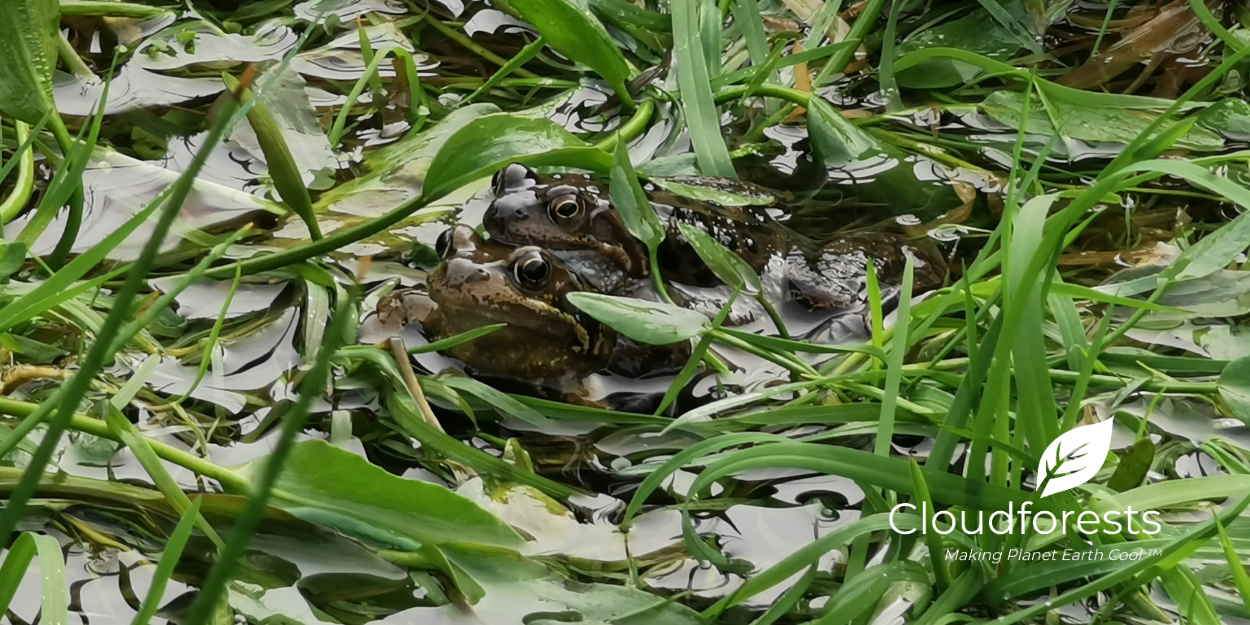Exploring Ireland's Amphibians and Reptiles
Ireland, with its lush green landscapes and abundant water bodies, provides a haven for a variety of amphibians and reptiles. These fascinating creatures play a crucial role in the ecosystem and offer a glimpse into the island's rich biodiversity. However, we have a surprisingly small number of native amphibian and reptile species on the island.
Common frogs mating, Cloudforest One. Photo by Kim Lake
The Common Frog (Rana temporaria)
The most widespread amphibian in Ireland, the Common Frog, is typically brown or olive green with darker markings. They thrive in various habitats, from ponds and lakes to gardens and grasslands. Their life cycle involves spawning in water, where eggs hatch into tadpoles, which eventually metamorphose into adult frogs.
The Smooth Newt (Lissotriton vulgaris)
Smaller than frogs, Smooth Newts have a distinct tail and a slender body. They prefer ponds and ditches with ample vegetation, where they feed on insects and invertebrates. During the breeding season, males develop a crest along their back.
The Natterjack Toad (Epidalea calamita)
A rarer amphibian in Ireland, the Natterjack Toad is known for its distinctive yellow stripe down its back and its loud, croaking call. They prefer sandy habitats, such as coastal dunes and heathland.
The Common Lizard (Zootoca vivipara)
Ireland's only native reptile, the Common Lizard, is typically brown or green with darker markings. They are found in a variety of habitats, including grasslands, heaths, and woodlands. Unlike many other lizards, they give birth to live young.
Conservation
Habitat loss, pollution, and climate change threaten these species. Conserving their habitats and raising awareness about their importance are crucial for their survival.
What You Can Do
Create a wildlife pond or log pile in your garden.
Avoid using pesticides and herbicides near water bodies.
Support local conservation organizations.
By understanding and appreciating these amphibians and reptiles, we can contribute to their protection and ensure the continued biodiversity of Ireland's natural environment.


